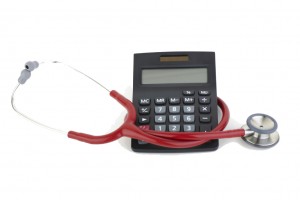What is a Conventional Loan?
A conventional loan is the most common type of mortgage. It is sometimes referred to as a “Prime” or “A-Paper” mortgage. A conforming loan is one that is eligible for purchase by either Fannie Mae or Freddie Mac. The current limit for conforming loans is $417,000 in much of the country, and up to $625,500 in those high-end markets. Anything above this is considered to be a “jumbo” mortgage. Due to the lack of government insurance, conventional loans are a higher risk for lenders. Thus, if you wish to finance your new home purchase with a conventional loan, you must often meet more stringent credit and income requirements than those who finance their properties using an FHA or VA mortgage.
What are VA and FHA (Government Loans)?
VA (Department of Veterans Affairs) or FHA (Federal Housing Administration) mortgages are loans that are limited in amount as they are intended for low and middle income buyers. As a result, they often require lower down payments and may carry lower interest rates.
The Physician or Doctor Loan
In general, a physician loan or doctor mortgage is a portfolio loan product. This means that the bank or institution that is making the loan is actually going to keep and service the loan. This enables the bank making and servicing the loan to determine its own underwriting guidelines and risk threshold, resulting in more liberal guidelines for physicians. However, each bank’s guidelines are different so you may not qualify for one but may be a perfect match for another. For this reason, it is best to work with a mortgage broker that specializes in working with physicians and other healthcare professionals. As a result, he or she will be much more likely to understand the unique situations and circumstances physicians face and help you choose the loan
There are several benefits of a physician home loan over a conventional loan including:
Higher Chance of Approval: When some “outside of the box” factor makes you ineligible for conventional financing, a physician home loan might be your only option. More often residents, fellows and new in practice physicians are approved with physician home loans and declined for a conventional loan because they just don’t fit the guidelines due to student loans, time on the job and/or the amount of downpayment required.
Low Down Payment: The physician home loan will finance 90-100% percent loan to value depending on the bank making the loan, where the property is located, and the loan amount you are seeking.
No Private Mortgage Insurance (PMI) Required: Most lenders feel that borrowers who make low down payments (and therefore have little equity in the property) are more likely to default on a mortgage loan. As a result, they generally require you to purchase Private Mortgage Insurance if you are borrowing more than 80 percent of the value of the home you are purchasing (your down payment is less than 20 percent of the purchase price). PMI guarantees that your lender will be paid if you default on your mortgage. Since you are a physician and the odds of you defaulting on your loan is very low, this is not required. Typically the doctor mortgage is going to save you .5% to 1% in annual PMI, but you will pay .25% to .5% higher rate for this loan type. Essentially the bank making the physician mortgage loan is willing to underwrite the loan with more liberal guidelines, but for taking on that added risk that conventional guidelines do not allow, they charge a slightly higher rate.
Student Loan(s) are Not Counted Against Your Debt to Income Ratio: This is a significant difference between a physician home loan and a conventional loan, particularly for someone transitioning out of residency, fellowship or are “new in practice” where student loans might be deferred or in IBR (Income Based Repayment). Conventional underwriting guidelines do not allow you to exclude payments for any deferred, income based or loans in forbearance. In any case, where the current payment is zero, conventional guidelines require underwriting to count that debt against your monthly debt to income ratio at 2% of the outstanding balance. So if you are a resident, with $150,000 in deferred student loans, conventional guidelines require that your monthly student loan repayment be calculated at $3,000, which can significantly impact the home that you ultimately buy. Physician home loans will typically allow you to exclude or use an IBR payment to qualify.
Higher Loan Limits: Since physician home loan lenders do not sell the loans to Fannie Mae and Freddie Mac, they are not going to have the conventional loan limits. The loan limits will vary by where you are in the country and by the institution that is making the physician loan. Generally, you will be able to borrow a higher amount with less money down using a doctor loan than you could under a conventional loan.
Ability to Close Before Starting Work: Most conventional mortgage lenders will require that you provide two paystubs before you close on your new home. A physician home loan will allow you to close prior to starting work. Some physician home loans will allow you to close as far as 90 days in advance of the start date of your new job and qualify you based on your employment contract or offer letter. For clients with families, this is a tremendous benefit and can save you the time and trouble of having to move twice.
Flexibility In Terms of Proof of Income: Conventional underwriting guidelines typically require two years’ worth of tax returns for proof of income if you are self-employed or an Independent Contractor (paid on a 1099 and not a W-2). This situation is very common for Dermatologists and, as such, these physicians may have to wait until they have two full years’ tax returns, which is often nearly three years on the job before they can obtain conventional financing. A physician home loan will allow a self-employed physician to qualify with as little as a six-month history of income, enabling you to buy a home almost two years earlier with a physician loan than you could with a conventional loan.
The two most common types of mortgages are fixed rate mortgages and adjustable rate mortgages (ARMs). Fixed rate mortgages feature equal monthly installments over the term of the life of the loan. The most common fixed rate mortgages have terms of 15 or 30-Years.
ARMs offer reduced initial interest rates, but lenders are able to adjust their rates after an initial fixed period. These types of mortgages are often identified by their rate adjustment periods. For example, a 7/1 ARM offers a fixed interest rate for the first seven years and an annually adjusted rate for the duration of the loan. Since the term of your mortgage remains constant, the amount necessary to pay off your loan by the end of the term changes as your loan’s interest rate changes. Thus, your monthly payment amount is recalculated with each rate adjustment.
ARMs can be a valuable resource for first-time home buyers as the initial fixed interest rate is often considerably lower compared to the rates on either a 15-Year or 30-Year fixed rate mortgage. For this reason, it is important that young physicians seriously consider the length of time that they believe they will remain in their first home.
Physicians, especially those early in their careers, have rapidly expanding income levels and need specialized home loan products that allow for principle reduction and re-amortization of their mortgage payments. There are several mortgage programs that will allow you to make big principle reductions, which trigger both lower mortgage interest rates and lower minimum monthly payments without refinancing. For these reasons, a doctor loan may be something to strongly consider.

